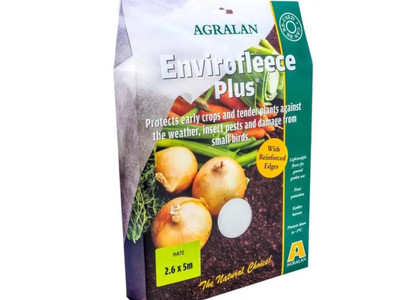How Can I Heat My Greenhouse For Free in the Winter?

With rising energy bills being the reality these days, many people will want to avoid the expense of trying to heat a greenhouse by using storage or paraffin heaters etc. There are some alternative methods you can use to heat your greenhouse. However, keep in mind that it’s going to be an uphill struggle to heat the greenhouse during the colder months. There’s also the fact that you’re going to be seeing much less sunlight at this time of year, so don’t get too hopeful about what you can achieve in cooler, wintry conditions.
Fleece
A heavy-duty garden fleece such as Envirofleece can be used for crop protection for winter vegetable seedlings. It will keep plants insulated while still letting in some light and air. This method is as economical as they come and the fleece can usually be re-used. Additionally, you can layer up the material for extra insulation.
View Envirofleece Plus - Garden Fleece For Plant Protection
Water Barrels
The idea behind this method is that you place several large water barrels and containers (filled with water) in your greenhouse - if you have the room that is. Water acts as a ‘thermal mass’, holding twice as much heat as concrete. To some degree, the containers can absorb thermal energy and slowly release it at night when the temperature drops. Opinion varies on how well this method of heating works in a greenhouse during colder months.
If you feel like trying it out, make sure to place the barrels in a position that maximises the sunlight they receive. If they’re painted black, they will absorb solar energy more readily - although conversely, lighter colours reduce heat loss. Bricks also have thermal mass, and can be placed around plants or raised beds to provide mini ‘thermal batteries’.
Bubble Wrap
Bubble wrap polythene can be fixed to the inside of the greenhouse, reducing heat loss. This method comes with pros and cons. Bubble wrap can reduce the amount of sunlight that your greenhouse plants receive - and sunlight is already at a premium during the dreary winter months. It can also affect ventilation levels. That said, bubble wrap insulation can help with overwintering crops and protect plants from frost. Look for horticultural bubble wrap as opposed to the more common kind. This type is extra thick with larger bubbles. Bubble wrap insulation can raise the greenhouse temperature by 1 or 2 degrees, which may not sound like much but can be enough to keep frost at bay. Bubble wrap insulation can be combined with fleece insulation applied around individual plants. Again, though - this will all affect the amount of sunlight your plants receive, so bear that in mind and remove the fleece if the temperature rises enough to do so.
Livestock
Setting up or fencing off an area of the greenhouse as a makeshift chicken coop or hen house is a creative way of providing heat. The body heat of the chickens will warm the air, especially as temperatures drop at night. One chicken can emit heat similar to a lightbulb.
Compost
Another outside-the-box method of heating that some gardeners use is to place a compost heap inside the greenhouse. This can depend on how much space you have available. The composting process creates heat as a byproduct. However, this method does run the risk of introducing pest problems, not to mention a strong smell. An alternative is to place the pile or heap against an outer wall and hopefully transfer some heat that way.
Similarly, ‘hotbeds’ are raised beds which are filled with decomposing straw and manure. A thinner layer of compost or soil is then placed on top, and used for planting. In essence it’s a cross between a raised bed and a compost heap.




